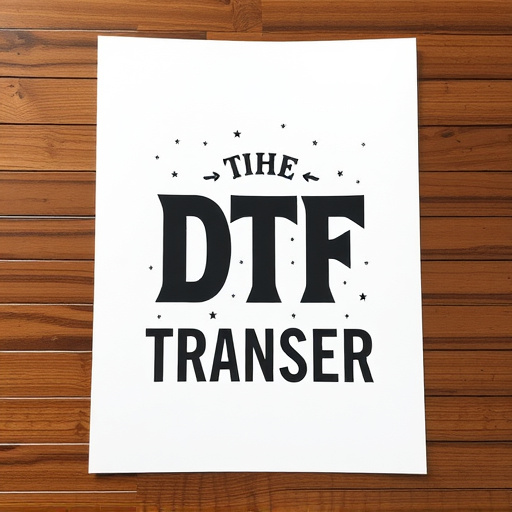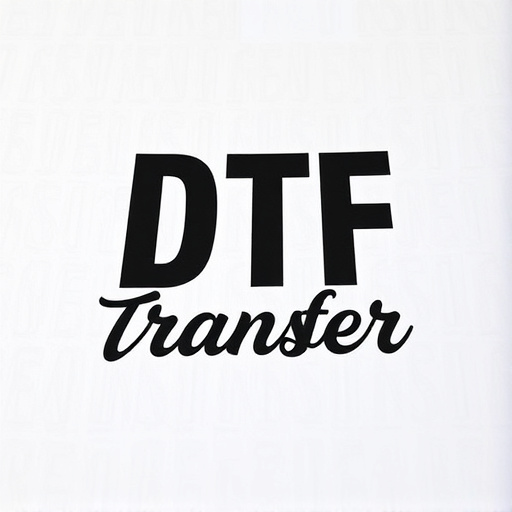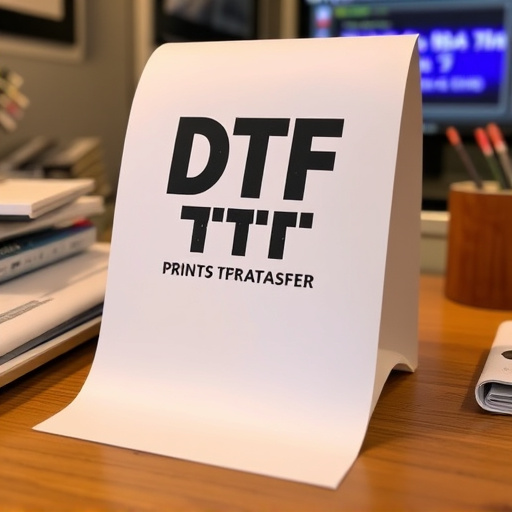Direct-to-film (DTF) printing offers a cutting-edge solution for high-quality prints on various surfaces. It involves directly transferring ink to a film using specialized equipment and inks. To achieve DTF prints, prepare designs in digital formats like SVG or high-res raster images, select appropriate films, and set up a clean workspace with safety gear. After printing, post-processing includes cooling, cleaning, and curing to enhance adhesion, durability, and vibrancy. Meticulous preparation, including film cleaning, printer calibration, and troubleshooting common issues, ensures optimal DTF print results.
Discover the art of direct-to-film (DTF) printing with our comprehensive guide. This step-by-step tutorial breaks down the process from start to finish, empowering you to create vibrant, high-quality DTF prints at home. Learn about the essentials—from understanding DTF transfer technology to gathering the right equipment and materials. We’ll walk you through preparing your design, applying the transfer, and curing your prints for optimal results. Elevate your DIY projects with the magic of DTF!
- Understanding Direct-to-Film (DTF) Transfer: A Brief Overview
- Necessary Equipment and Materials for DTF Printing
- Preparing Your Design for DTF Transfer
- Step-by-Step Guide to Applying DTF Transfer
- Post-Print Processing and Curing of DTF Prints
- Tips and Troubleshooting for Optimal DTF Results
Understanding Direct-to-Film (DTF) Transfer: A Brief Overview

Direct-to-film (DTF) transfer is a cutting-edge printing technique that has revolutionized the way we bring designs to various surfaces, especially in the realm of DTF prints. This process involves transferring ink directly onto a film or substrate using specialized equipment, eliminating the need for intermediate steps like plates or screens. DTF offers unparalleled precision and detail, making it an attractive option for creating high-quality prints on diverse materials.
DTF transfer technology enables precise control over design elements, ensuring that every intricate detail is reproduced accurately. It’s particularly popular among professionals in industries such as textiles, signmaking, and promotional merchandise. With DTF printing, the process is faster, more efficient, and cost-effective compared to traditional methods, allowing for quick turnaround times without compromising on quality.
Necessary Equipment and Materials for DTF Printing

Using Direct-to-Film (DTF) printing involves specific tools and materials to achieve high-quality prints. Essential equipment includes a DTF transfer machine, which facilitates the precise application of ink onto film, along with a variety of films optimized for different print requirements. Specialized inks designed for DTF are crucial; they must be compatible with the chosen film type to ensure optimal adhesion and vibrancy in the final DTF prints.
Additionally, you’ll need gloves and protective eyewear to prevent skin contact with ink, as well as a clean workspace equipped with a vent or mask to handle any fumes. A stable platform for your materials is also important, ensuring accurate placement of films during the transfer process. Gather these essentials, and you’re ready to embark on the DTF printing journey, creating stunning DTF transfers with precision and care.
Preparing Your Design for DTF Transfer

Preparing your design for a DTF transfer is a crucial step in ensuring high-quality prints. Start by ensuring your artwork or image is in a digital format, typically a vector graphic or high-resolution raster image. Vector graphics, like SVG or AI files, are ideal as they scale perfectly without losing detail, while high-res raster images (at least 300 DPI) guarantee crisp, clear prints.
Next, use graphic design software to prepare your file. Adjust the size and resolution according to your print requirements. Remove any unnecessary elements or backgrounds, leaving only the design intended for printing. Consider adding bleed areas if needed, especially for full-bleed prints, to account for slight misalignments during the printing process. Finally, save your file in a format compatible with DTF printers, such as PDF or PNG, ensuring it adheres to the specific requirements of your chosen DTF service or printer.
Step-by-Step Guide to Applying DTF Transfer

Applying a Direct-to-Film (DTF) transfer is a precise process that brings digital designs to life on various surfaces. Here’s a step-by-step guide to ensure a successful DTF print:
1. Prepare Your Design: Start by selecting or creating your desired artwork using graphic design software. Ensure the design is high-resolution and optimized for printing. Crop and adjust the image as needed, making sure there are no visible borders or extra spaces around the design.
2. Choose the Right Film: Select a DTF film suitable for your project’s material. Different films offer varying levels of adhesion, durability, and transparency. For example, matte films provide excellent opacity on light-colored surfaces but may require more pressure during application. Transparent films are ideal for clear substrates, allowing the original surface color to show through while adding your design.
3. Set Up Your Workarea: Cover your workbench with a clean sheet or cloth to protect it from residual adhesive. Ensure proper lighting conditions to easily visualize the transfer process. Have all your tools ready: a squeegee, a clean cloth for pressing, and any necessary cleaning solutions.
Post-Print Processing and Curing of DTF Prints

After completing the DTF printing process, the next crucial step is post-print processing and curing. This involves several key actions to ensure the longevity and quality of your DTF transfers. Firstly, allow the prints to cool down; this prevents any warping or unwanted movement during the subsequent steps. Once cooled, a thorough cleaning with a mild detergent and warm water removes any residual ink or debris from the surface.
Curing is an essential part of the process, as it ensures the adhesive properties of the DTF transfer set properly. Most professionals recommend using a heat press or setting the printed item in a warm, dry environment for a specific duration. This step guarantees that the transfer adheres firmly to the desired substrate, whether it’s fabric, wood, or metal. Proper curing enhances the overall durability and vibrancy of the final design, making your DTF prints stand the test of time.
Tips and Troubleshooting for Optimal DTF Results

Using direct-to-film (DTF) prints requires a bit of practice and attention to detail to achieve optimal results. Here are some tips and troubleshooting strategies for successful DTF transfers:
1. Preparation is Key: Ensure your film is clean, free from any debris or dust particles. Use isopropyl alcohol to gently wipe the surface before printing. Proper preparation minimizes ink bleed and ensures crisp, clear prints. Additionally, calibrate your printer settings accurately; the correct temperature and exposure time are crucial for successful DTF printing.
2. Troubleshooting Common Issues: If your DTF prints have visible streaks or uneven ink application, check your print head alignment. Ensure the film is fed correctly and smoothly into the printer. Adjusting the feed speed or using a higher-quality film can also improve accuracy. In case of faded or poorly transferred images, consider increasing exposure time or trying a different ink formula compatible with your DTF transfer process.














